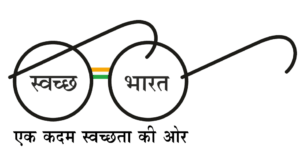There is a constant advancement in the field of medicine. From the pre-historic times to the present date, each era is preceded by preliminary historical antecedents which are vital in understanding how the medical field has progressed. The need for better mode of treatment led to the discovery of various systems of medicines around the world at different time periods. Every therapeutic system of medicine has a history of its own. The history of Homoeopathy dates back to the 18th century when Dr. Samuel Hahnemann (1755-1843), a German Physician in the year 1796 discovered the law of similars by his experiment with cinchona bark . Because of its scientific evidence with positive results and wide acceptance among people, WHO declared homoeopathy as the the second largest system of medicine in the world. Still, there are several unexplored areas in the system that deserves further study through active research and development.
HISTORY OF HOMOEOPATHY IN INDIA
The new concepts of “Homoeopathy” were making inroads into the medical world with a new ideology of cure and having definite theory and principles. The newly hypothesized medicinal system entered into India in 1839 by the effort of John Martin Honigberger (1795-1869) the Royal Physician of Punjab who treated Maharaja Ranjit Singh for his illness, declared by many physicians at that time as incurable. The popularity of John Martin Honigberger gradually increased and eventually he was nicknamed “Cholera doctor” as he was able to successfully treat Cholera, one of the most deadly epidemic of that time through Homoeopathy.
In the middle of the 19th century when Homoeopathy was gaining popularity, a landlord, Babu Rajendra Lal Dutta (1818-1889) came forward to support Homoeopathy and established homoeopathic hospital and free dispensary and went on to be known as the Father of Indian Homoeopathy. Thiennette Berigny, a famous French homoeopath, came to Calcutta at the beginning of 1864 and joined Babu Rajendra Lal Dutta to propagate the homoeopathic method of treatment in Bengal. Another great physician, L Salzar of Vienna came to Calcutta and worked effortlessly to spread Homoeopathic system of medicine in India.
16th February 1867, is a memorable day in the history of Homoeopathy in India. On this day Mahendra Lal Sircar (1833-1904), the great allopathic physician, the second MD graduated from the Calcutta medical college, a social reformer and propagator of scientific studies in nineteenth century India, In a meeting of the Bengal branch of the British medical association declared homoeopathy to be superior to the western medicine of the time & his conviction on homoeopathy. He was influenced by reading William Morgan’s “the philosophy of homoeopathy “ & was the first Indian who was institutionally trained as a Medical person & got converted to Homoeopathy & went on to become a leading homoeopathic practitioner in Calcutta as well as in India. He published the first Homoeopathic Journal of Asia, ‘The Calcutta Journal of Medicine’ in the year 1868. In 1881, many renowned physicians including Dr. P.C. Mujumdar and Dr. D. N. Roy established the first Homoeopathic medical College the ‘Calcutta Homoeopathic Medical College’ in Kolkata (then Calcutta) West Bengal . Dr. Lahiri, Dr. B. K. Sarkar, and many others made personal efforts in establishing Homoeopathy as a profession. Their combination was immensely helped to flourish Homoeopathy not only in Bengal but also in the whole country.
Father Muller (1841-1910) who was the grandson of Mr. Augustus Muller the school teacher of Dr. Samuel Hahnemann took up the vital role to spread Homoeopathy in the south India and started a charitable dispensary which eventually developed into a medical college , in Kankanady hill, Mangalore in 1880.
HISTORY OF HOMOEOPATHY IN KERALA
At the beginning of the 20th century, Christian missionaries have introduced Homoeopathy in Kerala. In the year 1920, the entire South Travancore was affected by a dreadful cholera outbreak and was effectively controlled by Homeopathic medicines which highly impressed The Sree Moolam Prajasabha of Maharaja of Travancore. After this remarkable event homoeopathic system reached its next milestone in the year 1928 when Dr. M.N. Pillai, a member of Sri Moolam Prajasabha had initiated a resolution in the Sabha which paved the way for recognition of Homoeopathy in Kerala.
In 1943 Homoeopathy Medical Practitioners bill was amended and after Kerala was formed into a separate state by uniting Travancore and Cochin, a Medical Practitioners Act was legislated giving equal importance to homoeopathy along with the other therapeutic system of medicines. During the period in the year 1958 when Sri EMS Namboothiripad was the Chief minister, then Health Minister Dr.A.R Menon, took sincere efforts to start Government Homoeopathic Dispensaries and eventually the first dispensary was started at Thiruvananthapuram .The same year Athurasramam Homoeopathic Medical college, Kurichy, Kottayam was started with a four and a half year Diploma course. In 1975, the first Government Homeopathic Medical colleges in Asia started at Calicut with a graduation Course in Homoeopathy and In 1983 another Government Homoeopathic medical college was started at Thiruvananthapuram.
References:
- Ghosh, Ajoy Kumar, History of Development of Homoeopathy in India,[Internet] Indian Journal of History of Science, 53.1 (2018) 76-83,[ cited 2020 October 07] DOI:
10.16943/ijhs/2018/v53i1/49366. - Ghosh Ghosh A. K. (2010). A short history of the development of homeopathy in India. Homeopathy : [internet]. The journal of the Faculty of Homeopathy, 99(2), 130–136.[cited 2020 October 07]
- Development in India,[ Internet]. Homoeopathy. National Health Portal of India, [cited 2020 October 07].
- Dr. Siva Rami Reddy, E. History of homeopathy: A review. Int J Hom Sci 2018;2(1):04-07.
- About us: [Internet]Father Muller Charitable Institutions, Father Muller Homoeopathic Medical College:[cited 2020, October 07].
- About Homoeopathy [ Internet]. Department of Homeopathy, Govt of Kerala. [cited 2020 October 07].
- Dr. Mansoor Ali, History of Homeopathy in Kerala[Internet].



